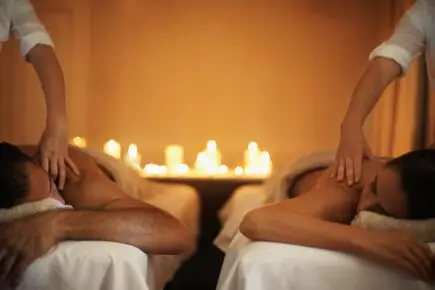How to Choose the Technique Proper Massage: Guide to Personal Well-being
In the search for personal well-being, massage is presented as a highly effective option. However, choosing the right massage technique can be overwhelming. In this article, we will explore various massage techniques and guide you to find the one that best suits your needs.
Understand Massage Techniques
Before we delve into choosing the right massage technique, it is essential to understand the options available. There are various techniques, each with specific approaches and benefits. Here are some of the most common:
Swedish Massage
Swedish massage, known for its relaxing approach, uses gentle, firm strokes to relieve muscle tension and reduce stress. This therapeutic method promotes blood circulation, promoting deep relaxation and improving flexibility. With an emphasis on tranquility, Swedish massage is ideal for releasing daily tension, offering a restorative respite for body and mind.
Thai massage
Thai Massage, rooted in ancient Thai tradition, combines stretching and pressure to relieve tension and improve flexibility. Performed on a mat on the floor, the therapist guides the recipient through movements that stretch and relax the entire body. This massage not only relieves stress and improves circulation, but also balances the body's vital energy. With a unique blend of yoga and acupressure, Thai Massage offers a revitalizing experience that harmonizes body and mind, promoting comprehensive well-being.
Shiatsu
Shiatsu, originating from traditional Chinese medicine, is a manual therapy that uses pressure from the fingers and palms to balance the body's vital energy. Focused on specific points, this massage seeks to relieve tension and promote energy circulation. It is practiced on a comfortable surface and the therapist uses pressure techniques, gentle stretches and rhythmic movements. Shiatsu promotes relaxation, reduces stress and stimulates the body's ability to self-regulate, offering a therapeutic experience that seeks to harmonize the connection between internal energy and physical and mental well-being.
Sport massage
Sports Massage, designed for athletes and active people, focuses on improving performance and accelerating muscle recovery. Using specific techniques such as friction, kneading and stretching, this massage relieves muscle tension, reduces stiffness and prevents injury. Adapted to sporting needs, it focuses on specific areas that experience greater physical demand. This treatment not only optimizes muscle function, but also promotes blood circulation, improving flexibility and contributing to better athletic performance and general well-being.
Deep Tissue Massage
Deep Tissue Massage focuses on addressing chronic problems and relieving specific pain. Using intense pressure and slow movements, this massage penetrates the deepest muscle layers, releasing tension and improving tissue function. Ideal for treating sports injuries or persistent discomfort, the therapist directs attention to specific areas, unraveling knots and promoting healing. Although it may cause some temporary discomfort, the result is a lasting release of tension, restoring mobility and contributing to the relief of chronic discomfort for an overall feeling of well-being.
Reflexology
Reflexology is based on the idea that pressure points on the feet and hands are connected to different parts of the body. This therapeutic massage uses specific pressure techniques on these areas to relieve ailments and promote overall health. Each reflex point corresponds to organs and systems, and adequate stimulation seeks to balance vital energy. Beyond being relaxing, Reflexology helps improve circulation, reduce stress and relieve discomfort. This holistic practice offers both physical and emotional benefits, providing a rejuvenating and balanced experience.
Assess your Individual Needs
Each person is unique, as are their massage needs. To choose the right technique, consider the following:
- Are you looking for relaxation and stress relief?
- Do you have specific muscle problems that require attention?
- Do you prefer a gentle or more vigorous massage?
- Do you have any medical conditions that should be considered?
It is crucial to speak with a massage therapist who can adapt the technique to your individual needs.
Evaluate your Individual Needs to Choose the Perfect Massage
In the vast universe of well-being and relaxation, each person is a unique individual, with specific characteristics and needs. When it comes to massage, choosing the right technique not only becomes a personal preference, but a decision that can significantly impact your physical and emotional well-being.
Relaxation and Stress Relief
One of the first factors to consider is whether you are looking for relaxation and stress relief. In everyday life, stress can accumulate in a variety of ways, whether due to work, family responsibilities, or simply daily stresses. A massage designed to provide deep relaxation may be the perfect choice in this case. Techniques such as Swedish massage or aromatherapy massage are known for their relaxing properties and ability to relieve built-up tension.
Specific Muscle Problems
On the other hand, if you are facing specific muscle problems that require attention, it is essential to consider more focused and therapeutic massage techniques. A specialized therapist can use methods such as myofascial release or sports massage to address specific areas of muscle tension or injury. This more targeted approach can be instrumental in improving the health and function of your muscles, providing long-term relief.
Personal Preferences: Mild or Brisk
Preference for a gentle or more forceful massage also plays a crucial role in choosing the right technique. Some people enjoy the relaxing sensation of a gentle massage that gently relieves tension, while others prefer a more vigorous experience that works deep into the muscle tissues. Communicating your preferences to the therapist is essential to ensure that the intensity of the massage meets your personal needs and comfort.
Medical Considerations
Additionally, if you have a medical condition, it is essential that the massage therapist is informed and can adjust the technique accordingly. Conditions such as arthritis, recent injuries, or circulation problems may require specific approaches and precautions during the massage session. Open and transparent communication with your therapist will not only ensure a safe experience, but will also allow you to tailor the massage to provide the greatest therapeutic benefits possible.
Dialogue with your Massage Therapist: Key to Personalization
In the evaluation process, it is crucial to have a detailed discussion with your massage therapist. These professionals are trained to understand and adapt to the individual needs of each client. An open dialogue will allow the therapist to learn about your health history, personal preferences, and expectations, allowing them to effectively personalize the massage experience.
Session Duration and Pleasant Environment
When choosing a massage technique, it is also beneficial to consider the duration of the session. Some people find that a shorter session is enough to relax and relieve stress, while others may prefer longer sessions to address specific muscle issues. Flexibility in session length is another advantage of working with a massage therapist who understands your individual needs.
The environment in which the massage takes place also plays a crucial role in your overall experience. A calm, relaxing environment with dim lighting, soft music and pleasant aromas can significantly improve the effectiveness of the massage. Many spas and wellness centers strive to create an environment that promotes total relaxation, thus contributing to a more enriching massage experience.
Frequency of Massages: Regular or Sporadic?
In addition to the massage technique itself, it is important to consider how often you plan to receive massages. Some people find significant benefits by scheduling regular sessions, either weekly or monthly, as part of their self-care routine. Frequency may depend on your individual goals, whether it's relieving stress, maintaining muscle health, or addressing specific issues.
Conclusion: Invest in your Physical and Emotional Well-being
In conclusion, evaluating your individual needs is a crucial step in selecting the perfect massage that suits you. By considering factors such as stress level, specific muscle problems, intensity preferences, and medical conditions, you can make informed decisions that maximize the therapeutic benefits of massage. Always remember to communicate openly and honestly with your massage therapist, as this active collaboration will ensure a personalized and satisfying experience with each session.
Ultimately, investing time in understanding your individual needs will lead you to discover the transformative world of massage, improving your physical and emotional well-being over time.
Consult with a Professional
Before receiving a massage, it is essential to consult with a qualified massage therapist. They will evaluate your needs and advise you on the most suitable technique for you.
Consider your Personal Preferences
In addition to your physical needs, consider your personal preferences. Some people enjoy a calm environment with soft music, while others prefer a more therapeutic approach. Communicating your preferences to the therapist is key to a satisfying experience.
Experiment and Adjust
Choosing the right massage technique may require some experimentation. Don't hesitate to try different techniques and therapists until you find the one that best suits you.
Before we close, while it may take time, finding the perfect massage technique can be transformative. Massage tailored for your personal well-being is an investment in your health and happiness.
Can book your massage sensitive or relaxing through our secure payment system or via email, WhatsApp, or telephone.




